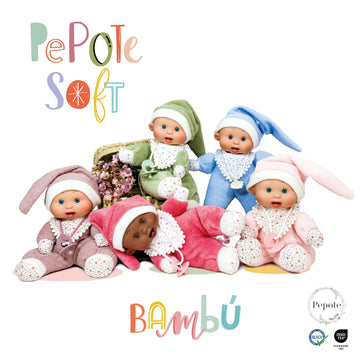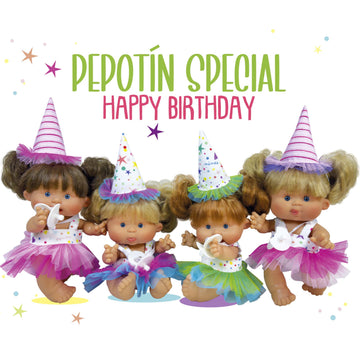The 7-Minute Rule for Dolls And Accessories
The 7-Minute Rule for Dolls And Accessories
Blog Article
The smart Trick of Dolls And Accessories That Nobody is Talking About
Table of ContentsSome Ideas on Dolls And Accessories You Should KnowThe Ultimate Guide To Dolls And AccessoriesUnknown Facts About Dolls And AccessoriesNot known Facts About Dolls And AccessoriesMore About Dolls And AccessoriesSome Known Facts About Dolls And Accessories.Getting My Dolls And Accessories To Work
When dolls are included in group play, youngsters exercise waiting, sharing, and listening to others' ideas. Whether they're pretending to be a parent, sibling, or close friend, children learn how relationships workhow to sustain others, address differences, and treatment for another person. These early role-play experiences come to be the foundation for healthy relationships and connections later in life.Repeating soothing routines with a doll (feeding, rocking, placing to bed) can assist kids feel calm and secure. These calming rituals teach them how to self-regulate. Looking after a doll can make a child feel capable and certain - high end dolls. It provides them a feeling of obligation and control in a globe that usually really feels uncertain.
Dolls And Accessories Can Be Fun For Anyone
When children see dolls that reflect their race, heritage, and society, it strengthens a positive sense of identity. Dolls additionally introduce children to cultures outside their very own, developing considerate interest and compassion for others.
As Dr. Karyn Purvis, a leader in youngster growth and trauma-informed care, once stated: This powerful quote highlights just how play isn't simply funit's how children discover best. The mind cords itself through repeating. When a kid is engaged, joyous, and psychologically linked to an activitylike doll playthe mind reinforces those connections faster and a lot more meaningfully.
Not known Factual Statements About Dolls And Accessories

Kids need compassion, generosity, and creativity tooand doll play uses that. Dolls are commonly a youngster's first "friend," assisting them exercise relationships, construct communication abilities, and really feel comforted.
Indicators on Dolls And Accessories You Need To Know
With dolls that matter. Samantha Ong Samantha Ong is the creator of Joeydolls, a Canadian-based plaything brand on an objective to commemorate Oriental cultures with joyous, comprehensive play. Influenced by her own experiences growing up without cultural depiction, Samantha designs dolls that aid children really feel pleased of who they are while triggering inquisitiveness and empathy in others.
Playing with dolls encourages youngsters to speak even more regarding others' thoughts and emotions, a research has located. The research suggests that playing fictional video games with dolls might help children create social skills, theory of mind and empathy. The neuroscientist who led the work claimed that the academic worth of playing with Lego and building and construction playthings was commonly approved, however the benefits of having fun with dolls often appeared to have actually been forgotten."When kids produce fictional globes and function have fun with dolls, they communicate initially aloud and afterwards internalise the message concerning others' thoughts, feelings and sensations," stated Dr Sarah Gerson, a neuroscientist at Cardiff University and the lead writer.
Things about Dolls And Accessories
They were also most likely to deal with the dolls in the 2nd person, speaking to them directly, whereas the personalities on the computer screen they tended to refer to in the third individual. No distinction was observed in between boys and girls."Inner state language can show that a kid is thinking regarding other individuals's thoughts and feelings while playing with dolls," stated Gerson.
And that they see language usage in this regard is great verification of the theory."Mardell included that the findings should certainly use to any kind of type of role-play toy, rather than being details to Barbies. "I would certainly take a more comprehensive sight of what a doll is," he claimed." [Maybe] any kind of object that the kid can invest a feeling of various other into a stuffed animal, an oven mitt that speaks to them, and even a fictional buddy."Children generally begin to show signs of interior state language around the age of 4.
All About Dolls And Accessories
"It ends up being essential for making and maintaining relationships, and how they gain from their instructors, and moms and dads."The study likewise located that the youngsters had boosted mind task in the posterior remarkable temporal sulcus (pSTS) area when they spoke as though their dolls had ideas and feelings. The pSTS region is believed to be entailed in the advancement of social and psychological processing skills.
Youth is not a static life phase; without a doubt, the definition, definition read this and understanding of youth are all subject to modification. By the 19th century among one of the most extensive modifications was the relevance positioned on allowing kids to experience "the carefree delights" of childhood via play tasks. Play was now thought about to be a vital part of an excellent youth.
In order to fully comprehend the meaning of play, one must likewise recognize the relevance of the doll. However, dolls are far more than playthings created to entertain girls. Throughout the 19th century correct playtime activities were selected to advertise intellectual, physical or psychological development. Dolls were especially prominent because they were assumed to foster and support feminine qualities such as compassion, caring and empathy.
Examine This Report about Dolls And Accessories

It is only with archaeological investigations that researchers can want to reveal and document the full variety of play experiences. Narrating these experiences, and especially the function of dolls, is vital for presenting a much more complete image of youth throughout the 19th century. Alarcn, Sara E - doll accessories., "Youngster's Play: The Role of Dolls in 19th Century Childhood Years" (2007 )
Report this page